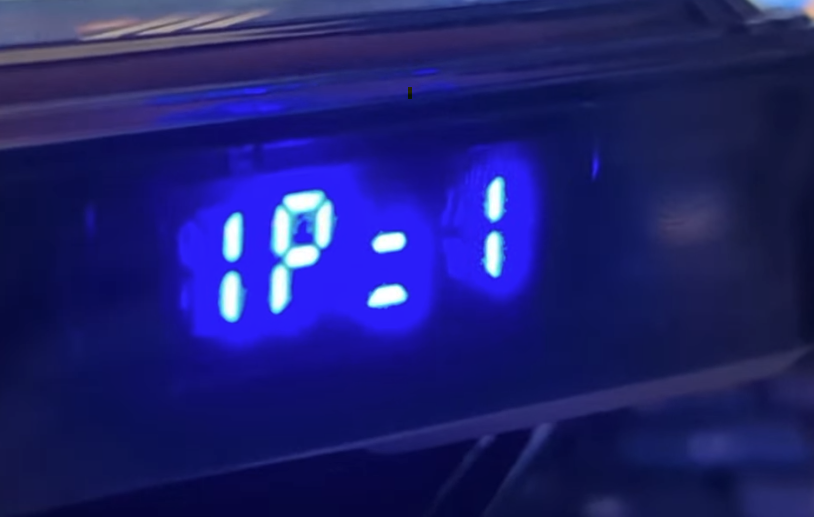All Activity
- Past hour
-

Gaming experience with Orange Pi 5 (RK3588) on Armbian
KhanhDTP replied to KhanhDTP's topic in Orange Pi 5
@oscylator678 I used this PPA https://launchpad.net/~ernstp/+archive/ubuntu/mesaaco Mesa 23.0, PanVk has already Vulkan 1.4. - Today
-

Gaming experience with Orange Pi 5 (RK3588) on Armbian
oscylator678 replied to KhanhDTP's topic in Orange Pi 5
Impressive! How did you get DXVK-stripped v2.7.1 to work? Full DXVK v2.7.1 requieres Vulkan 1.3, which is not yet available PanVK (I got Device does not support required feature 'fillModeNonSolid' when tried) -
@Fredrik thank you for testing.
-
It seems like there is a mix-up between specs for the framework and for the OS. A lightweight desktop can run on 512MB, yes but probably not much fun, depending on applications. Won't recommend running a web browser. I'd probably get some existing cheap sbcs with similar specs and play with them to elaborate if the performance is sufficient.
-
Hello, I am planning to desgin a Computer-on-Board, but would like to know what are the minimal specs needed for it to run a graphical user interface with a desktop. Doing a simple Google Search gives me two answers: "512 MB RAM memory, at least 8 GB of storage (on a quality SD card or eMMC), a 4-core processor, and wired networking. For a more advanced Armbian build framework, you'll require a system with at least 8GB of RAM and 50GB of disk space, although specific requirements vary depending on the hardware." My main issue with this is that it doesn't explain directly if 512 MB of RAM and a 4-core processor (and what frequency?) are enough for the most lightweight GUI desktop.
-
Thank you very much. I will try it. Thank you very much. I will try it.
-
Can someone explain these lines? # find real mmcblk device numbered 0, 1, 2 for eMMC, SD for ret in $(find /dev -name 'mmcblk[0-2]' -and -type b) do if [ -b ${ret}boot0 ];then emmc_dev=$ret else sd_dev=$ret fi done On the RockPi-S, $ret would equal mmcblk0 and mmcblk1 which are the eMMC and SD card, respectively. There's no device called "mmcblk0boot0" or "mmcblk1boot0".
- Yesterday
-

Install openVFD for LCD display on recent (6.12) kernels - Tutorial
torz77 replied to torz77's topic in Reviews / Tutorials
I can confirm that my changes have now been merged into the upstream linux_openfd repo, so I have deleted my fork. Unfortunately I am unable to edit my instructions, but hopefully it should be clear from the instructions that if my fork is unavailable, then the original repo should be used (alternatively, if a mod could edit the post to remove the reference to my fork, to make the instructions clearer, that would also be appreciated). -
Small update. The hack below seems to work as well. $ sudo systemctl edit armbian-hardware-optimize.service Add the following content between comments [Unit] Before=basic.target systemd-networkd.service netplan-wpa-wlan1.service Please note that armbian-hardware-optimize was picked at random to force anything that touches wlan1 to wait until slightly later in the boot process. No tests were done to determine at what exact point in the boot process wlan is "safe" to interact with.
-
Thanks for the reply, Tall Man. In a way, that was the point. My experience is really only with my home network use and with nvme information displayed by linux tools which seem to insist on the xnypz suffix on the root word nvme. I continued reading up on the general topic overnight and it seems that in the dtb tree world, the focus is on structuring cohesion and delaying actuating instances, so I am guessing different (more general) descriptors are used. My query was whether the precise descriptor was correct as I could see other options possible, one of which had, I think, popped up elsewhere. Since I had seen other reports of difficulties in loading systems to devices, I thought it a remote possibility that a typo had crept in. I still havent found anything definitive in my reading re the formats of the abstractions in the dt stack. I am interested in knowing about this but I as my Armbian is up and running now, and I identified the actual issue for me was a sd card error, the pressure is off . So, I hope this ramble was not too tedious and I do appreciate that you took the time to answer, and again, thanh you cheers
-
I am not sure if I am using the git command correctly to get mpv-0.3.9 with PR14690.. Please help roberto@orangepizero3:~$ mkdir mpv-official roberto@orangepizero3:~$ cd mpv-official/ roberto@orangepizero3:~/mpv-official$ git clone https://github.com/mpv-player/mpv roberto@orangepizero3:~/mpv-official$ cd mpv roberto@orangepizero3:~/mpv-official/mpv$ git checkout -b release/0.39 roberto@orangepizero3:~/mpv-official/mpv$ gh pr checkout 14690 <- downloads and applies the v4l2request changes roberto@orangepizero3:~/mpv-official/mpv$ nano video/out/gpu/hwdec.c <-- I see the added changes in the hwdec.c file roberto@orangepizero3:~/mpv-official/mpv$ meson setup build <-- everything configures ok, but at the end, it shows that I got mpv-0.40 I asked in the mpv github and a contributor said they are waiting for ffmpeg first incorporate v4l2request, then they will add the feature in mpv Applying the pr14690 manually on top of mpv 0.3.9 is something that i could do, if there’s no choice
-
i've updated the image to include info on screen like IP / cpu usage / ram usage (in %) any software can write to /tmp/screen to change content you can download here
-

Regression in CB1 kernels for network drivers general instability
Ederhex replied to ressu's topic in BIGTREETECH CB1
This MainsailOS pull request contains a cb1 trixie image that is working. It does forces NetworkManager instead of netplan. After flashing look for a wifi txt file on the BOOT partition to pass wifi credentials. -
I thought that v4l2request was exclusively in this github project and branch: https://github.com/philipl/mpv/tree/v4l2request Which github project and branch/release are you trying? I successfully compiled and installed the mpv from https://github.com/philipl/mpv/tree/v4l2request I made the /etc/mpv.conf as per the original post Result: 50% cpu in 4 cores, about half dropped frames: I don't see any mention of hwdec=drm in the mpv log I used the libplacebo from Trixie, not compiled on my own... I can try that next. <- final update for this post: libplacebo downloaded and built by myself did not help... but now I will try mpv 0.3.9
-
I compiled mpv 0.40.0 on Debian Trixie with the patches for v4l2request, but the outcome is messy at best. There is a new hwdec v4l2request, but also two new gpu-hwdec-interop v4l2request and v4l2request-overlay. It works with acceleration when launched from a terminal, but in wayland/weston v4l2request refuses to work. I don't know what happened, but it looks like a big regression from 0.39. Better use the old mpv version IMHO.
-
@mitu I'm not sure how to use that program it only plays white noise but it comes through hdmi. I can also play wav files using aplay on command line.
-
I've recently switched my FriendlyElec NanoPC-T6 to use the Armbian Linux v6.12 server image, built on the 24th of May 2025. Booting of SD works fine, but when installing to the eMMC chip some I/O errors can be found in the kernel logs: [ 151.814773] I/O error, dev mmcblk0, sector 176 op 0x0:(READ) flags 0x80700 phys_seg 10 prio class 2 This happens when under heavy I/O load - e.g. performing an apt upgrade. I ran badblocks over the entire eMMC chip without issue - but that puts a much lower strain on the eMMC. Therefore, i'm convinced that the eMMC chip itself is fine. Poking around a bit, this seems to be because the A3A444 eMMC chip which some NanoPC-T6 SBCs shipped with do not support HS400 mode properly. There is an OpenWRT bug report about this, which fixed the issue by patching the dtsi to force HS200 mode. My kernel logs confirm that I have the A3A444 eMMC chip, and that it is currently running in HS400 mode: sudo dmesg -e | grep -i mmc [ +0.015143] mmc0: SDHCI controller on fe2e0000.mmc [fe2e0000.mmc] using ADMA [ +0.051640] dwmmc_rockchip fe2c0000.mmc: IDMAC supports 32-bit address mode. [ +0.000020] dwmmc_rockchip fe2c0000.mmc: Using internal DMA controller. [ +0.000008] dwmmc_rockchip fe2c0000.mmc: Version ID is 270a [ +0.000025] dwmmc_rockchip fe2c0000.mmc: DW MMC controller at irq 91,32 bit host data width,256 deep fifo [ +0.000210] dwmmc_rockchip fe2c0000.mmc: Got CD GPIO [ +0.012806] mmc_host mmc1: Bus speed (slot 0) = 400000Hz (slot req 400000Hz, actual 400000HZ div = 0) [ +0.007795] mmc0: new HS400 Enhanced strobe MMC card at address 0001 [ +0.000906] mmcblk0: mmc0:0001 A3A444 230 GiB [ +0.004124] mmcblk0: p1 [ +0.000720] mmcblk0boot0: mmc0:0001 A3A444 4.00 MiB [ +0.001831] mmcblk0boot1: mmc0:0001 A3A444 4.00 MiB [ +0.001742] mmcblk0rpmb: mmc0:0001 A3A444 4.00 MiB, chardev (243:0) [ +0.227497] EXT4-fs (mmcblk0p1): mounted filesystem a4f48be8-f667-4cac-a9a7-61ce8f9035d1 ro with ordered data mode. Quota mode: none. [ +0.021022] EXT4-fs (mmcblk0p1): re-mounted a4f48be8-f667-4cac-a9a7-61ce8f9035d1 r/w. I've tried to use a user device overlay to use mmc-hs200-1_8v, but this doesn't appear to work. I think this is because Device Overlays can only replace elements or add to the tree? i.e. I cannot use an overlay to remove the existing mmc-hs400-1_8v; and mmc-hs400-enhanced-strobe; entries. Is there a way to do this with a user device overlay, or will I need to try to add a similar patch to OpenWRT's one in the kernel? This is the first time i've used Armbian so i'm a little unsure about how i'd go about doing the latter. I've found a similar report of this issue from a couple of years ago by @SuperKali, albeit with no resolution. However, I can see they're now listed as one of the community maintainers for this board so i'm hoping it's OK to mention them in this thread to see if they know how best to force HS200 mode for the eMMC!
-
Type in the command: lsblk There, addressing the nvme should be obvious.
-
Hello everyone, I got a tv box: J15 pro with rk3328 inside I tried the trunk version but it failed to boot then I tried the achived 23.11.1 version, It can boot normally, but if i do a full upgrade , the box failed to boot again. I think maybe the box do not compatible with kernel 6.12 so i tried to hold the 3 packages: linux-dtb-current-rockchip64 linux-image-current-rockchip64 linux-u-boot-rk3318-box-current and then upgrade , It works what can i do to help to fix the compatible problem? ps lshw shows the box comes with a wifi chip: rtl8189es
-
Small guide for fixing Ethernet on the latest Armbian. 1. Make sure you have the correct device: cat /proc/device-tree/model → OrangePi 3 LTS 2. Decompile the dtb to dts: dtc -I dtb -O dts /boot/dtb/allwinner/sun50i-h6-orangepi-3-lts.dtb -o ./sun50i-h6-orangepi-3-lts.dts 3. Check the correct pins (yours may differ): grep -i reset-gpio sun50i-h6-orangepi-3-lts.dts | head -n 1 → reset-gpios = <0x1e 0x03 0x0e 0x01>; 4. Create the file sun50i-h6-ethernet.dts. Use the provided template and substitute your pin values. My file for example: /dts-v1/; /plugin/; / { compatible = "allwinner,sun50i-h6"; fragment@0 { target = <&emac>; __overlay__ { snps,reset-gpio = <0x1e 0x03 0x0e 0x01>; snps,reset-delays-us = <0 10000 1000000>; snps,reset-active-low; mdio { ethernet-phy@1 { reset-gpios; reset-assert-us; reset-deassert-us; }; }; }; }; }; 5. Add your overlay: armbian-add-overlay sun50i-h6-ethernet.dts 6. Reboot and enjoy working Ethernet: reboot
-
Belay that. I copied trixie to ssd and it fired up just fine without sd in slot. However, I dont yet understand nvme addressing requirements, but I can now read up on it.. so, for me, solved. Thanks









